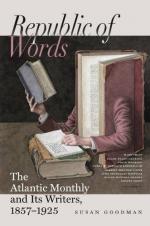Emperor Maximilian I.,[27] married Mary of Burgundy
in 1477, which “gave a lift” to his race
that enabled it to increase in importance at a very
rapid rate. Mary was in possession of most of
the immense dominions of her father, which he had intended
to convert into a kingdom, had he lived to complete
his purpose. His success would have had great
effect on the after history of Europe, for he would
have reigned over the finest of countries, and his
dominions would have extended from the North Sea to
Provence,—and over Provence so powerful
a sovereign would have had no difficulty in extending
his power,—which done, his dominions would
have been touched by the Mediterranean. Louis
XI. of France got hold of some of Mary’s inheritance;
but the greater part thereof she conveyed to Maximilian.
She died young, leaving a son and a daughter.
The son was Philip the Fair, who in 1496 married Juana,
daughter of Ferdinand and Isabella, king of Aragon,
and queen of Castille, and heiress of the Spanish
monarchy, which had come to great glory through the
conquest of Granada, and to wonderful influence through
the discovery of the New World,—events
that took place in the same year, and but a short time
before the marriage of the Austrian archduke and the
Peninsular princess. This marriage, useful and
brilliant as it was to the house of Austria, turned
out bitterly bad to the parties to it,—and
it is not an isolated case in that respect. Philip
the Fair was a very handsome fellow, as became his
designation, or rather whence his designation came;
but on the principle that “handsome is that handsome
does,” he was one of the ugliest of men.
He was guilty of gallantry, the weakness of kings,
and of many of the sovereign people too. When
living in Spain he had many amorous adventures; and
his wife, who had brought him so great a fortune that
she thought she had an especial claim on his fidelity,
became exceedingly jealous, and, being a dague en
jarretiere lady, as became one who was born to
reign over Andalucia, killed her faithless husband,—not
by stabbing him, but by giving him poison. This
was in 1506, when husband and wife were but twenty-eight
and twenty-four years old, and had been but ten years
married. There were two sons and four daughters
born of this marriage, all of whom made important marriages.
The eldest son was the man whom Mr. Stirling calls
“the greatest monarch of the memorable sixteenth
century,”—Charles V., Emperor of Germany,
and the Spanish Charles I. He founded the Spanish branch
of the house of Austria, the elder branch.[28] He
married Isabella of Portugal, and their son was Philip
II., who added Portugal to the possessions of the
Austrian family, and one of whose wives was Mary Tudor,
queen of England, the Bloody Mary of fire-and-fagot
memory; and Philip gladly would have placed Mary’s
sister Elizabeth in his half-vacant bed. The
marriage of Philip and Mary was barren, and poor Mary’s
belief that a “blessed baby” was coming




